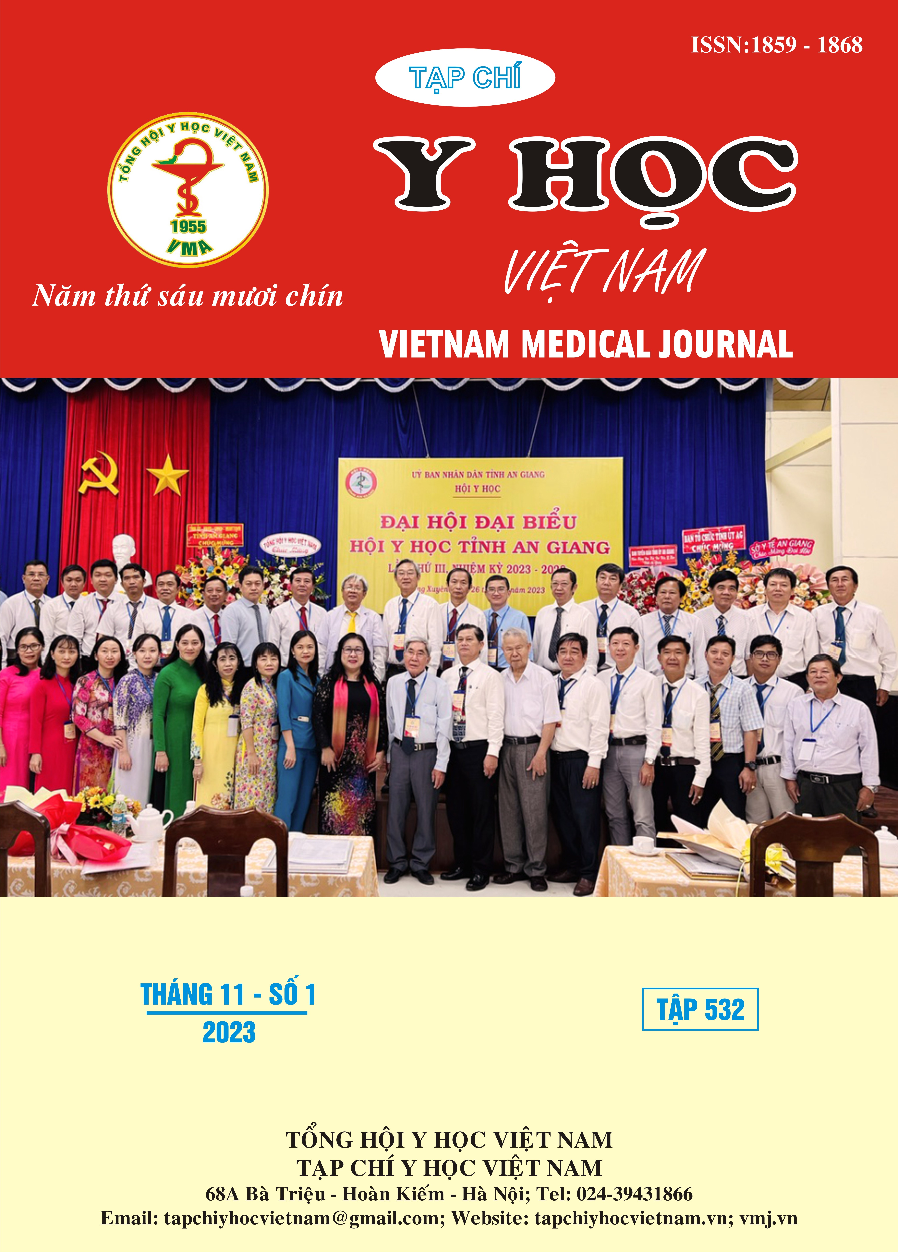EVALUATION OF ESOPHAGEAL MOTILITY BY CHICAGO CLASSIFICATION VERSION 4.0 IN PATIENTS WITH GASTROESOPHAGEAL REFLUX SYMPTOMS
Main Article Content
Abstract
Objectives: The study aimed to describe the prevalence of esophageal motility disorders according to the Chicago classification v4.0 (CCv4.0) and compare clinical symptoms, endoscopic findings within groups in patients with gastroesophageal reflux symptoms. Methods: A descriptive study was conducted among 300 patients with gastroesophageal reflux symptoms performed high-resolution manometry (HRM) from May 2022 to August 2022 at the Institute of Gastroenterology and Hepatology. Results: The mean of age was 48.6 ± 13.2 and 61% were females. According to the Chicago classification version 3.0 (CCv3.0), the proportions of esophageal motility groups were: 36% normal, 3.7% absent contractility (AC), 57.3% ineffective esophageal motility (IEM), and 3% distal esophageal spasm (DES). According to CCv4.0, IEM was still the most common motility disorder (39.3%). 31.4% of patients with IEM diagnosed by CCv3.0 were converted to normal motility in CCv4.0. The mean of GerdQ score was significantly higher in absent contractility and IEM groups. The proportion of erosive esophagitis in normal motility group was higher than the IEM group (59.3% versus 45.8%, p=0,03). Conclusions: IEM was the most common motility disorder according to the CCv4.0. The clinical symptoms in absent contractility and IEM were more severe compared to normal esophageal motility.
Article Details
Keywords
Gastroesophageal reflux disease, esophageal motility disorders, Chicago classification version 4.0, high resolution manometry.
References
2. Fox MR, Sweis R, Yadlapati R, et al. Chicago classification version 4.0© technical review: Update on standard high-resolution manometry protocol for the assessment of esophageal motility. Neurogastroenterol Motil. 2021; 33(4): e14120. doi:10.1111/nmo.14120
3. Gyawali CP, Kahrilas PJ, Savarino E, et al. Modern diagnosis of GERD: the Lyon Consensus. Gut. 2018;67(7):1351-1362. doi:10.1136/gutjnl-2017-314722
4. Lundell LR, Dent J, Bennett JR, et al. Endoscopic assessment of oesophagitis: clinical and functional correlates and further validation of the Los Angeles classification. Gut. 1999; 45(2): 172-180. doi: 10.1136/gut.45.2.172
5. Sikavi DR, Cai JX, Carroll TL, Chan WW. Prevalence and clinical significance of esophageal motility disorders in patients with laryngopharyngeal reflux symptoms. J Gastroenterol Hepatol. 2021; 36(8): 2076-2082. doi: 10.1111/jgh.15391
6. Sallette M, Lenz J, Mion F, Roman S. From Chicago classification v3.0 to v4.0: Diagnostic changes and clinical implications. Neurogastroenterol Motil. 2023; 35(1): e14467. doi: 10.1111/nmo.14467
7. Triadafilopoulos G, Tandon A, Shetler KP, Clarke J. Clinical and pH study characteristics in reflux patients with and without ineffective oesophageal motility (IEM). BMJ Open Gastroenterol. 2016;3(1):e000126. doi: 10.1136/ bmjgast-2016-000126
8. Tuan AW, Syed N, Panganiban RP, et al. Comparing Patients Diagnosed With Ineffective Esophageal Motility by the Chicago Classification Version 3.0 and Version 4.0 Criteria. Gastroenterology Res. 2023; 16(1):37-49. doi: 10.14740/gr1563


